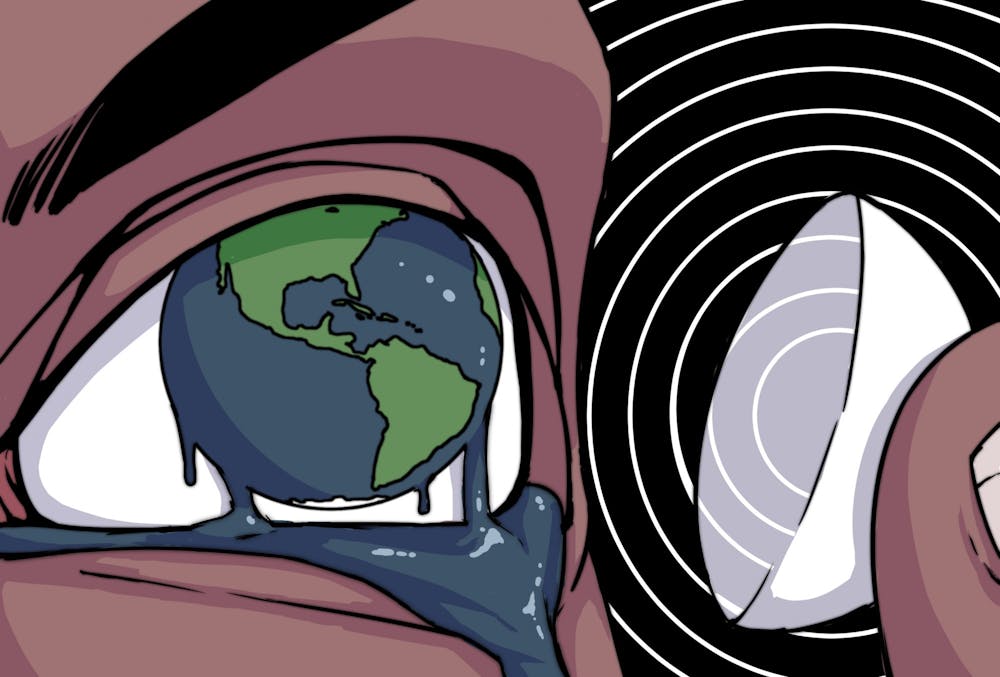Three ASU researchers found that single-use contact lenses may be one of the major contributors to microplastic pollution.
Biodesign Center for Environmental Health Engineering Director Rolf Halden, postdoctoral research scholar Charles Rolsky and graduate research assistant Varun Kelkar found single-use contact lenses to be a major source of microplastic pollution in a first of its kind study.
Contact lenses are made of silicone hydrogel plastic, which is a type of plastic introduced in the late 1990s and begun seeing usage in the early 2000s.
The researchers noticed that there is no standard or sustainable way to dispose of these contacts.
“As a species, we’re really good at creating things and then just kind of throwing it out there, and just hoping that it doesn’t cause a downfall society,” Rolsky said. “I think when (packaging disposal instructions) ends up on packaging like that it’s because of studies like this, it’s because someone’s found it’s a pollutant."
Silicone hydrogel is what makes contact lenses more breathable by allowing it to receive greater oxygen levels and allow for a soft, comfortable feel. Additionally, silicone hydrogel is used as a medical plastic for devices such as breast implants and medical tubing.
Single-use contact lenses have become a popular choice as shorter wear times lead to less health and infection risks, according to the study.
Dasia Allen, a junior applied biological sciences major, said she had no idea she was disposing of her contact lenses in an unsustainable way.
“I wasn’t given any direction on how to dispose of them, so I just threw them away,” Allen said.
Contact lenses are often disposed of by flushing or by being washed down a drain. This can lead the lenses to end up in a municipal wastewater treatment system, according to Rolsky.
From there, these contact lenses can become hidden in sewage sludge, a product of wastewater treatment.
Brianna Higgins, a junior software engineering major, said in an email that the convenience often leads her to dispose of lenses incorrectly.
“If I am taking them out at the end of the night I will toss them in the trash can, but if I open my contact case and see they are still in there and need to be changed I rinse it down the sink,” Higgins said.
The study found that during two experiments of different types of sewage, the contact lenses didn’t biodegrade throughout the entire process of wastewater treatment.
“When we went through the final product of what comes out of a wastewater treatment plan, which is pretty much fertilizer, we ended up finding two fragments of contact lenses,” Rolsky said.
Contact lenses also have the ability to carry bacteria, pathogens and viruses. This can enter the food chain from contacting fertilizer soil and eventually work its way up to humans.
“There was a recycling program created just for contact lenses and they ended up citing this work,” said Rolsky.
The study’s findings also show that microplastic pollution from single-use contact lenses is avoidable if users take initiative.
“If they can participate in the recycling program that would be awesome,” Rolsky said.
Although the program does repurpose the lenses, Rolsky advised that recycling isn’t what some might think.
“When we think recycling, we think a bottle becomes a bottle, a contact lens becomes a contact lens. That’s not the case,” said Rolsky “There’s a new phrase now, downcycling. Where basically it’s turned into something, but it’s something of lesser value.”
Reach the reporter at lizbetflores23@gmail.com and @florelizbet on Twitter.
Like The State Press on Facebook and follow @statepress on Twitter.




